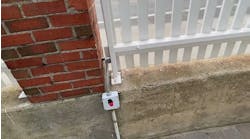Many of the OSHA citations for fall protection are related to missing guard rails, missing nets, and deficiencies in how harnesses and lanyards are handled.
Fix No. 1 — Ensure guard rails are where they need to be.
Look at every mezzanine, dock, or platform and note how much of the edge has guardrail to prevent someone from going over. In many cases, there needs to be an opening for the movement of materials or equipment. Solutions in such cases may involve setback guard rails, removable guardrails (to be placed across the opening when operations are not in place), and administrative procedures (e.g., harness and lanyard required to be past a clearly marked line). A contractor specializing in guard rail installation can advise.
Fix No. 2 — Ensure guard rails are tall enough and stout enough to prevent a fall.
OSHA has specific requirements, and these are met by guardrail products designed for industrial use. Fabricating something “good enough” isn’t good enough. Also, standard industrial products meet the “no opening greater than 19 inches” spec and other requirements.
Fix No. 3 — Where safety nets are used, ensure they are as close as practicable to the working surface.
The shorter the fall, the better. Also ensure they are capable of absorbing the energy imparted by the fall of workers and equipment. This means not only selecting the proper safety net in the first place, but diligently maintaining whatever safety net(s) you have plus their anchorage systems. The drop test mandated by OSHA involves a 400lb weight dropped from the highest point at which a person is expected to fall into the net.
Fix No. 4 — Implement a safety harness and lanyard inspection and usage history system.
This system also must track the age of these items. Generally, you should replace them after three years of moderate use.
Fix No. 5 — Train and certify users of safety harness and lanyard systems.
Among other things, they need to know:
- How to inspect a harness and lanyard before use and after use.
- How to properly wear and adjust a harness so they don’t come out of it or be turned upside down during a fall.
- What they can and cannot clip onto.
- Not to climb higher than the protection attachment point, and why.
- Basic methods for reducing the likelihood of a fall in the first place.
All of these things need to be in your safety procedures. One reason is so an OSHA inspector sees that you are officially making them part of your safety program. Another is so employees see that you are officially making them part of your safety program.
Once you get these five easy fixes implemented, pick out another five by looking at OSHA’s fall protection requirements. Those may be harder to implement, but don’t let that deter you. Keep going with five fixes at a time until you’ve gone completely through the OSHA requirements for fall protection. Then start from the beginning and review to see how well you are doing.




